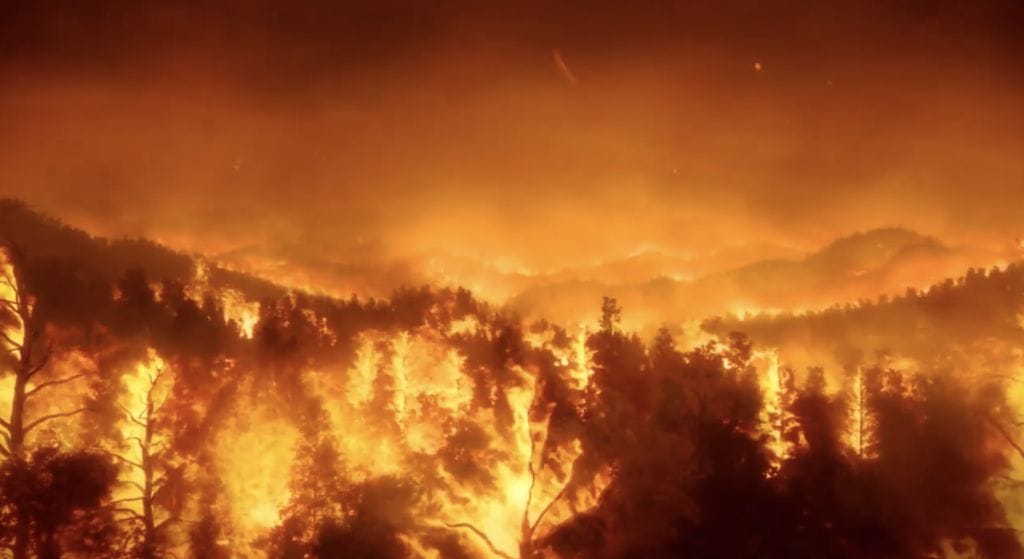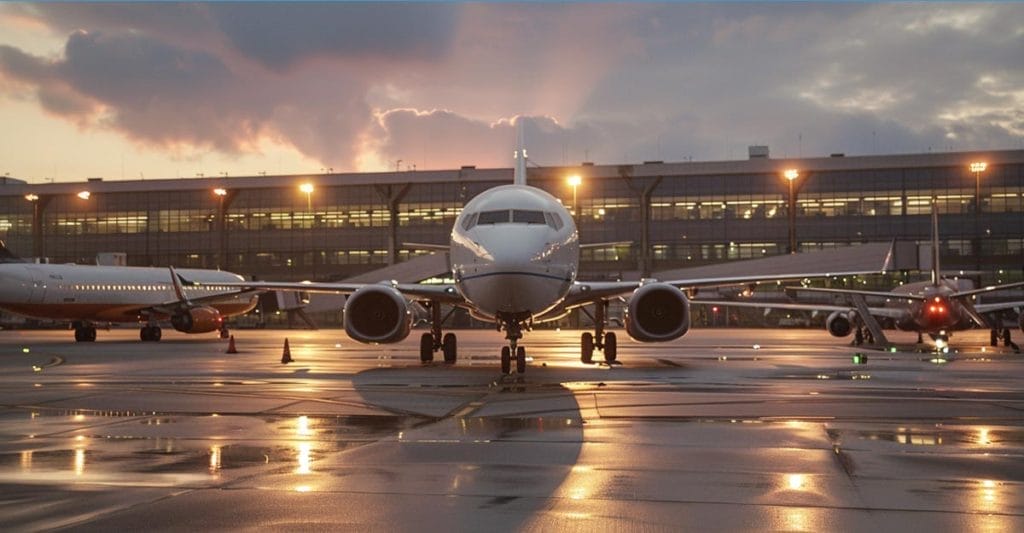American wildfires remain one of the most vexing problems in emergency response. The most recent wildfire season saw more than 7 million American acres burned. That’s an area larger than the state of Maryland. Scott Thuman reports from Idaho on how new technology is helping us fight back.
The following is a transcript of a report from “Full Measure with Sharyl Attkisson.” Watch the video by clicking the link at the end of the page.
The first sign: wisps of smoke billowing from the hills, and then an unmistakable smell fills the air.
In the distance, a familiar sound grows in intensity as a big twin rotor Chinook helicopter comes into view.
Getting closer, we see it picking up its next payload.
Scott: It is a constant churn here along the Snake River. The helicopters coming and going at a routine pace. They fill up with water, and they go right back out to the fight.
The aircraft deployed to what was called the Moose Fire, a giant blaze in western Idaho this summer. At its worst, more than 1,000 firefighters were defending the tiny town of Salmon and others around it.
But it’s dangerous business on the ground and in the air. In July, a Chinook like this one crashed at this same spot while collecting water. Pilot Thomas Hayes and co-pilot Jared Bird were both killed.
Aircraft have been used to fight fires since the mid-1950s, but these days, more pilots are doing their work—from the ground.
Not far from the fire line, this drone team dispatches their latest weapon in this war, one saving them critical time in locating new flames and where they’re heading. Eric Haberstick spent time on the fire lines earlier in his career and calls this eye in the sky a game-changer.
Eric Haberstick: We’re able to provide situational awareness, good video imagery along with infrared imagery, which is very valuable in our business — finding hot spots that you may not necessarily see with the naked eye, the firefighter on the ground.
Scott: So you’re able to — because of the drone, you can pick out things that would just be really difficult to see from the ground with the human eye?
Eric Haberstick: Oftentimes, yeah.
But its real trick is a bit of science.
Brad Strobel: This is a couple components. You got a hopper, which we load with spheres that have a potassium permanganate, commonly called dragon eggs.
Scott: Dragon eggs?
Brad Strobel says these small pellets injected with an antifreeze-like solution and dropped by drone are saving lives — setting backfires and performing the crucial task of killing off a perimeter around a large fire and preventing it from spreading farther.
Scott: What does that do with the antifreeze hitting it?
Brad Strobel: Yep, that causes an exothermic chemical reaction that just bursts into flames, usually about 20 seconds or so.
Scott: So it’s already hit the ground and then it’ll, essentially, combust?
Brad Strobel: Yep, yep, very similar to what we do with a drip torch — small spots of fire on the ground.
Rather than sending teams on foot through heavy terrain for hours, sometimes days on end — the unmanned aircraft more and more heavily relied on in fighting fire with fire. And in this case, saving the town of Salmon in what has been another destructive fire season.
Eric Haberstick: I grew up being that guy that was the fifth burner, and it’s a struggle fest. And a lot of the times, it really — I mean, there’s a lot of risk involved. And I love being able to do this and know that those people don’t have to do that as much. And we’re still getting the same job done.
That new technology going hand-in-hand with age-old bravery.
Sharyl (on-camera): So how does this season compare with recent years?
Scott: Well the number of fires, which was around 60,000, and the area burned makes this year around average. But there are those larger fires like that one in Idaho. It took more than 100 days before it was fully contained, 130,000 acres scorched, and cost $70 million to fight it.
Sharyl: It seems like we haven’t heard as much though about it. Sometimes it’s on the news like every day.
Scott: Right. Thankfully this year a little bit different because we’ve had fewer major catastrophies. And then one state that you typically hear a lot about, California, had a milder fire season compared to recent years.
Sharyl: Good news for them. Thanks, Scott.

The Lemonade Mermaid Store
Unique gifts for Land or Sea Mermaids, Mer-pets and Little Mermaids!
Left: Pastel Beach Necklace $16




I love the fact that technology is being used to protect fire fighters. I grew up in an area in California where a lot of young people joined the USFS (including my brother who made a career out of it) and local crews to fight forest fires), and one of my son’s friends died while fighting a fire in Arizona a few years ago.
This doesn’t really address the problem of why there are so many catastrophic fires NOW compared to 50 years ago. The big problem that is at the root of the crazy fires is that there is too much fuel in the forests now, and it is going to be really difficult to solve.
Since the “war” on logging and the morphing of forest management from “conservation” (i.e., actually managing the forest) to “preservation” (preventing the use of or any human-hands manipulation of natural processes) we have seen nothing but destruction. The forest gets overgrown and that actually weakens the trees and makes them susceptible to insect and other pests that damage and kill them.
My great-uncle was an FS Ranger back in the 1920’s. The rangers back then had a working relationship with the Native Americans whose people had lived here for millennia before (those darn) whites arrived. They taught my great uncle and others the methods that the natives used to manage the forests. At the end of each season, when they were heading down the mountains to the warmer valleys for the Winter, they would light fires behind them that would burn slowly through the underbrush, clearing out the brush and downed branches, while not getting hot enough to burn up into the tree canopy. In the Spring when they returned, they could easily make their way through the forests as there was no impeding undergrowth. If you look at old photographs taken in the mountains back in the early days of California, you can see hundreds of yards. If you go up to the mountains today, you can’t see 20 feet.
It’s a mess and there is no easy way to resolve it…